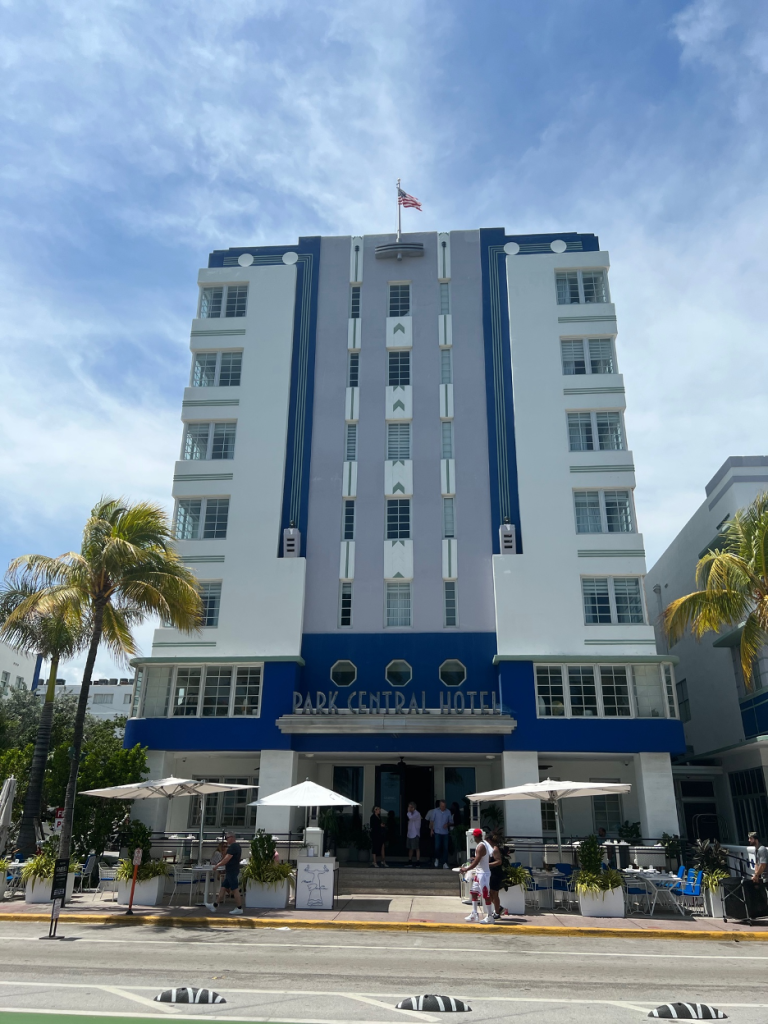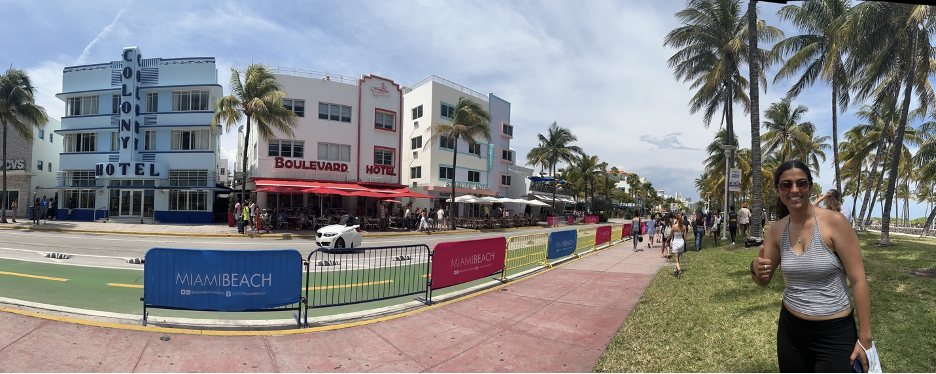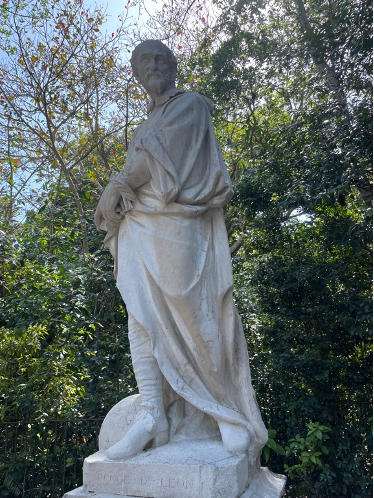Nathalie Herrera is a senior at Florida International University studying Chemistry, Natural and Applied Sciences, and Biology. She plans on pursuing a career as a Physician Assistant in order to treat others and improve their quality of life. With a growing passion for the sciences, she would also like to expand her knowledge about the arts and cultures from around the world through travel. The Italia Grand Tour is a once in a lifetime opportunity for her to become immersed in a new environment.
Deering as Text
“Off the Beaten Path“
by Nathalie Herrera of FIU at Deering Estate

Miami is known worldwide for its white sandy beaches and urban city life along the coast. No more than 15 miles from the modern bustle of downtown Miami lies the Deering Estate, a natural wonder that showcases not only one of the vast ecosystems of South Florida but also its rich history. Largely untold and unknown by the majority of Miamians, the Deering Estate has preserved this history, both the good and bad.
Walking off the beaten path was an expansive system of mangroves and wildlife hidden amongst the trees. The Deering Estate has done an exceptional job at preserving eight different ecosystem types native to South Florida. On our hike, we were able to experience some of these habitats, which were largely untouched. This is not a common sight when walking through the busy streets of Miami, and perhaps it should be. The urbanization of Miami has caused drastic changes in our interactions with nature. Although South Florida is known for areas such as the Everglades and its beaches, on a day-to-day basis, Miami natives rarely interact with these areas. We should use the Deering Estate has a prime example of how to preserve the natural beauty of South Florida, and implement better infrastructure that does not destroy, but better includes nature in our everyday lives. Charles Deering’s focus on preservation stood out to me because much of Miami’s famous landmarks rely on modern art culture and architecture for their appeal, so this trail represented a change of pace from the norm. Deering Estate included these features but also celebrated the natural aspect of Miami.

Vizcaya as Text
“Living Lavish”
By Nathalie Herrera of FIU at Vizcaya
J’ai dit. James Deering’s infamous home on the water exhibits the indulgences and self-centeredness that plagues Miami. With over 30 rooms and 10 acres of land, each room in Vizcaya has something different to offer. As you walk through the back entrance, which is ironically where most visitors enter, you see a sculpture of Ponce de Leon over a globe with Florida the most visible at the very center. Without even stepping inside, Deering is already highlighting that we are the center of attention. Welcoming us into the beautiful home as you walk through the front doors is none other than the god of wine and ecstasy, Bacchus, inviting everyone to indulge in the pleasures of such a lavish lifestyle.
Strolling through the house, each room showed a different indulgence, pleasure, or reference back to the man himself, James Deering. The barge on the water displaying a mermaid with large breasts. A room dedicated solely to a telephone, a rare amenity at the time. A music room for pure display where music was never played. Deering was nothing short of lavish and luxurious. It is interesting to see how even though Vizcaya was built over a century ago, people still pursue the same material pleasures, especially in Miami. We buy the most up to date products and wear name brand clothing to show off faux extravagance. J’ai dit. Coming back to these famous words etched in glass, perhaps we should take a step back from ourselves and the need to impress, and rather look introspectively.
Downtown Miami as Text
“An Orange Slice of Life”
by Nathalie Herrera of FIU in Downtown Miami
Miami has always been an epicenter of diversity. As our class took a walking tour around the streets of downtown, we were surrounded by a variety of different cultures, histories, and people that make this city so unique. A perfect depiction of this is an impressive art installation in the center of downtown. It showed orange slices and peels bouncing out of a shattered bowl, symbolizing the chaos and craziness of the bustling city.

Well before the modern Miami we all know and love came to be, the city was founded by some great individuals that truly represent what Miami is about. In the 1850s, a couple named William Wagner and Eveline Aimar moved to South Florida. Almost unheard of at the time, they were a mixed-race couple who succeeded in being a middleman between the Seminoles, who were driven down south, and Northern settlers. Despite the harsh discrimination and hardships their family faced, they were able to be the common ground between two vastly different communities. Looking through the boarded windows of their small wooden home, I was taken back in time over 150 years ago. Their good nature and determination to be true to themselves at such a difficult point in time is inspiring.

Fast forward a century to the 1960s, another beacon of hope and unity lies on the Downtown Miami skyline. The Freedom tower is a beautiful 17-story building that served as a refugee center for Cuban immigrants who recently entered the country. Coming from a Cuban immigrant family myself, I felt connected to the building and what it symbolized for all those people years ago: the hopes and dreams to start a new life in a new place. Their faces on the walls of the Freedom Tower, I was reminded of my roots and how amazing it is to live in a city connected by hardship and hope.

South Beach as Text
“A Walk Down MiMory Lane”
by Nathalie Herrera of FIU in South Beach
South beach is the spot for locals and tourists alike to enjoy the crystal-clear waters and beaming sunshine. As we began our walking tour on the pier, we get a sight of what people all around the world flock to Miami to enjoy. Walking down the dock, we even got to see some fellow FIU Honors College students jumping off into water to cool off from the South Florida heat.
However, the beaches are not the only spectacle to enjoy at Miami Beach. Our class was able to walk down Ocean Drive in its entirety. Ocean Drive is a stretch of approximately 2 to 3 miles full of such distinct and fun buildings. The architecture in this area is unlike anything I’ve ever seen. Specifically, it has three different styles: Mediterranean revival, art deco, and MiMo (also known as Miami Modern). The Mediterranean revival buildings were my personal favorites. They are heavily inspired by Western European buildings with all the attention to miniscule details. The MiMo buildings are exactly what I could have pictured from the name alone: buildings related to the water and beaches. These were boat-shaped structures with lots of windows and curvature.


Very distinct from this was the Art Deco buildings. They were color blocked buildings shaped like different types of machinery. It reminded me of vintage 50’s diners with neon lights and the like, which were most likely inspired by the Art Deco trends of the early 20th century. To me, the Art Deco buildings were very tacky and not appealing. However, the history behind it gives Ocean Drive a sense of unity and allure. From Barbara Baer fighting for the preservation of Art Deco to its transition to an iconic staple of Miami Beach, Ocean Drive is would not be what it is today without the presence and history of these buildings.


